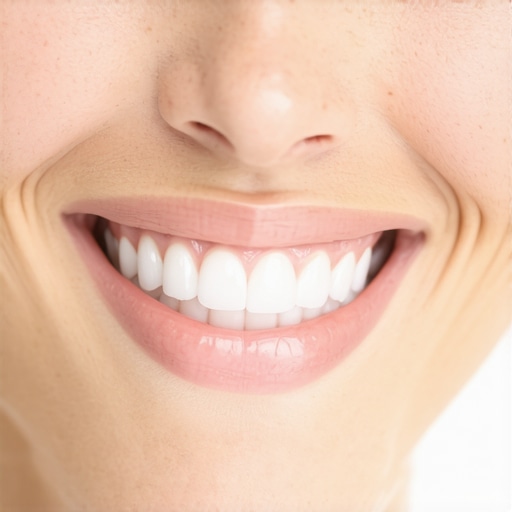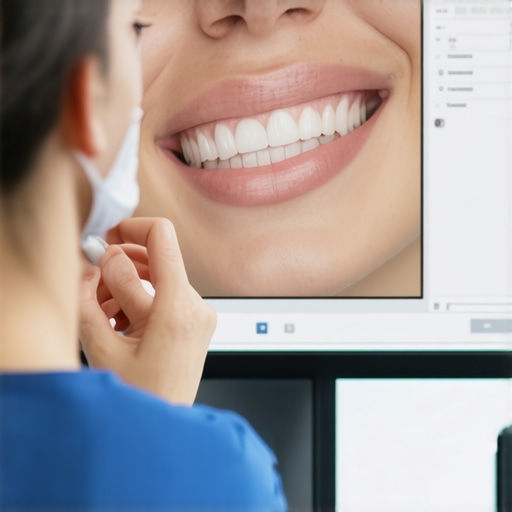Unlocking the Future of Cosmetic Dentistry: A Deep Dive into 2024 Smile Enhancement Trends
In an era where aesthetic excellence and functional health converge, the pursuit of a perfect smile has transcended traditional boundaries. As a seasoned dental specialist, I recognize that the landscape of cosmetic dentistry in 2024 is marked by groundbreaking innovations in veneers, teeth whitening, and Invisalign technology. These advancements are not merely cosmetic but are rooted in complex biomechanical and material sciences, offering patients transformative results with unparalleled precision and longevity.
Complexity of Smile Makeovers: Beyond Surface Aesthetics
Modern smile enhancement procedures require an intricate understanding of facial anatomy, occlusion dynamics, and individual aesthetic goals. For example, the integration of digital smile design allows for a comprehensive, patient-specific blueprint, facilitating predictive outcomes that align with both functional and aesthetic parameters. This approach leverages high-resolution imaging and 3D modeling, ensuring that every veneer or aligner is meticulously tailored, reflecting a synthesis of artistry and science.
Emerging Materials and Techniques in Veneer Fabrication
In 2024, the advent of ultra-thin, high-strength ceramics like lithium disilicate and zirconia composites has revolutionized veneer durability and translucency. These materials enable minimal invasiveness while maximizing aesthetic realism. Furthermore, the advent of chairside CAD/CAM systems expedites the fabrication process, allowing for same-day restorations that maintain high precision standards. For in-depth insights on veneer innovations, visit Veneers Made Simple.
Advanced Whitening Protocols: From Peroxide Formulations to Light-Activated Systems
Teeth whitening in 2024 is distinguished by the integration of laser-activated and LED-enhanced protocols, which accelerate stain removal with minimal sensitivity. The development of custom bleaching trays combined with novel, low-abrasion whitening gels ensures safe, effective results suitable for sensitive teeth. As an authority in this domain, I emphasize the importance of professional supervision to prevent over-bleaching and enamel damage, supported by research from the American Dental Association.
Invisalign and Clear Aligners: Precision in Orthodontic Aesthetics
The evolution of Invisalign systems in 2024 integrates smart technology with AI-driven treatment planning, leading to highly predictable movement of teeth. This approach not only enhances patient comfort but also reduces treatment time. The subtlety of these aligners makes them virtually invisible, which is crucial for adult patients seeking discreet correction. For detailed insights into the latest Invisalign innovations, see Invisalign Innovation in 2025.
What are the key considerations when selecting the most suitable veneer or whitening procedure for complex cases?
Choosing the optimal cosmetic solution involves evaluating enamel thickness, occlusion stability, patient expectations, and long-term durability. Advanced diagnostic tools, including digital smile analysis and 3D imaging, facilitate this decision-making process, ensuring personalized, effective outcomes.
If you are a dental professional seeking to enhance your understanding of these cutting-edge treatments, explore our family dentistry and cosmetic care resources or contribute your insights to the ongoing dialogue in this dynamic field.
Revolutionizing Smile Makeovers: What Role Does Digital Smile Design Play in 2024?
Digital smile design (DSD) is transforming the way dental professionals approach aesthetic enhancements in 2024. By utilizing high-resolution imaging, 3D modeling, and virtual simulations, dentists can craft highly personalized treatment plans that align with each patient’s unique facial features and aesthetic goals. This technology not only enhances precision but also facilitates better patient-dentist communication, allowing patients to visualize their future smile before any procedure begins. For an in-depth understanding of how digital innovations are shaping smile aesthetics, visit Veneers and Invisalign in 2024.
How can emerging materials in veneer fabrication improve durability and aesthetics?
Recent advancements in ultra-thin ceramics, such as lithium disilicate and zirconia, have set new standards for veneer longevity and translucency. These materials allow for minimal invasiveness while delivering natural-looking results. Additionally, chairside CAD/CAM systems enable same-day restorations with high precision, reducing patient treatment time without compromising quality. For insights on selecting the best materials, explore best veneers and cosmetic enhancements.
The Future of Teeth Whitening: Beyond Traditional Protocols
In 2024, teeth whitening protocols are becoming more sophisticated, integrating laser and LED technologies for faster, more effective stain removal with minimal sensitivity. Custom bleaching trays paired with low-abrasion gels are now standard, ensuring safety for sensitive teeth. Moreover, the development of long-lasting whitening effects is a key focus, supported by ongoing research in this area (American Dental Association, 2023). For professional whitening tips and tricks, see teeth whitening secrets for a sparkling smile.
Expert Insight: How Should Clinicians Approach Complex Cosmetic Cases?
Handling complex cases requires a nuanced approach that considers enamel thickness, occlusion, and patient expectations. Advanced diagnostic tools, including 3D imaging and digital smile analysis, are invaluable in crafting personalized treatment plans. Combining these tools with a thorough understanding of biomechanical principles ensures long-lasting, natural results. For comprehensive strategies, visit family dentistry and cosmetic care resources.
Are we truly maximizing the potential of digital and material innovations to create sustainable, beautiful smiles?
This question challenges both clinicians and researchers to think about the long-term implications of current innovations. As new materials and technologies emerge, ongoing research and clinical experience will determine how well they sustain aesthetic and functional results over time. Staying informed through reputable sources like the American Dental Association is essential for evidence-based practice.
If you’re passionate about staying at the forefront of cosmetic dentistry, consider sharing your insights or exploring more about how these innovations can be integrated into your practice by visiting our contact page.
Advanced Biomaterials in Veneer Fabrication: Pushing the Boundaries of Aesthetic Durability
The evolution of biomaterials for veneers in 2024 exemplifies a remarkable convergence of science and artistry. Ultra-fine lithium disilicate and zirconia composites now exhibit unprecedented translucency and fracture resistance, enabling clinicians to craft restorations that seamlessly mimic natural enamel. These materials benefit from ongoing innovations like nanostructuring, which enhances light transmission and surface resilience, thereby extending veneer longevity. Moreover, the integration of bioactive components such as fluoride-releasing fillers offers a dual function—restoration and remineralization—fostering healthier, more resilient tooth structures. These developments are not just incremental improvements but represent paradigm shifts toward minimally invasive, long-lasting aesthetic solutions.
Digital Smile Design (DSD): The Vanguard of Personalized Aesthetic Planning
In 2024, digital smile design transcends traditional visualization tools, becoming an integral part of predictive, patient-specific treatment planning. Using high-resolution imaging, 3D facial scanning, and AI-powered simulation software, clinicians can forecast postoperative outcomes with unparalleled accuracy. This technology facilitates real-time adjustments, aligning aesthetic goals with functional demands, and significantly improves patient communication and satisfaction. DSD also enables virtual mock-ups, allowing patients to virtually preview their new smile—an invaluable step in managing expectations and refining treatment plans. For practitioners aiming to harness this technology, staying abreast of emerging software updates and training is essential, as detailed in recent studies by the American Academy of Cosmetic Dentistry (AACD, 2023).
**Prompt:** High-resolution digital smile design interface showing 3D facial scans and mock-up simulations, with a clinician reviewing the plan in a modern dental clinic setting.
Crucial Considerations in Selecting Optimal Veneer and Whitening Protocols for Complex Cases
Choosing the most suitable cosmetic procedure for complex cases demands a nuanced understanding of individual oral biomechanics, enamel integrity, and aesthetic aspirations. A meticulous assessment using digital diagnostics—such as intraoral scanners and CBCT imaging—offers insights into enamel thickness, occlusal forces, and potential risks. For instance, ultra-thin veneers may be ideal for patients with minimal enamel, but their success hinges on precise bonding techniques and material compatibility. Similarly, advanced whitening protocols incorporating laser activation and custom trays must be tailored to safeguard sensitive tissues while achieving uniform shade enhancement. The decision matrix also involves evaluating long-term maintenance, patient compliance, and potential impacts on occlusion. As detailed in the Journal of Esthetic and Restorative Dentistry (2023), integrating evidence-based protocols with personalized diagnostics ensures optimal outcomes in challenging cases.
Q: How do clinicians balance aesthetic desires with functional requirements when planning complex smile makeovers?
Achieving this balance involves a comprehensive diagnostic approach, combining digital analyses with biomechanical assessments. The clinician must consider the health of supporting tissues, the stability of occlusion, and the patient’s aesthetic expectations. Multidisciplinary collaboration—integrating periodontics, orthodontics, and restorative dentistry—can optimize both aesthetics and function, ensuring sustainable results. Ongoing education and case-by-case customization are vital for success in this intricate process.
If you’re committed to advancing your expertise in complex cosmetic dentistry, explore our detailed resource hub or participate in professional workshops dedicated to innovative, patient-centered care strategies.
Transforming Aesthetic Dentistry: Cutting-Edge Solutions for Discerning Professionals
In 2024, the landscape of cosmetic dentistry is characterized by unprecedented technological advancements and material innovations that demand a sophisticated understanding from clinicians. Embracing these developments enables practitioners to deliver exceptional, long-lasting results that align with the highest aesthetic and functional standards.
How Can 3D Bioprinting Revolutionize Veneer and Restoration Fabrication?
Emerging 3D bioprinting technologies are poised to redefine the production of dental restorations, allowing for the fabrication of biologically compatible, patient-specific materials with unparalleled precision. This approach facilitates the integration of bioactive components that promote remineralization and tissue regeneration, ultimately enhancing restoration longevity and biocompatibility. According to recent studies by the Journal of Dental Research, the convergence of bioprinting and nanotechnology is opening new frontiers in aesthetic and regenerative dentistry.
What are the critical factors in selecting the optimal biomaterials for durable, natural-looking veneers?
Selection hinges on a comprehensive assessment of translucency, fracture resistance, bonding efficacy, and biocompatibility. Advances in nanostructured ceramics, such as translucent zirconia and lithium disilicate, enable the creation of ultra-thin, highly aesthetic veneers that withstand masticatory forces. Moreover, the integration of bioactive fillers enhances the interface between restoration and tooth tissue, supporting remineralization and reducing secondary caries risk. For an in-depth exploration of innovative materials, visit ScienceDirect’s material science review.
In-Office Digital Workflow: Streamlining Smile Makeovers with AI and CAD/CAM
The advent of AI-powered dental design software coupled with high-speed chairside CAD/CAM systems accelerates the journey from diagnosis to final restoration. This synergy allows for real-time adjustments, predictive simulations, and same-day restorations that meet exacting aesthetic and functional criteria. The integration of intraoral scanners, digital smile design, and robotic milling ensures minimal invasiveness and maximal patient satisfaction. For clinicians seeking to optimize their digital workflows, resources from the American Academy of Cosmetic Dentistry (AACD) provide invaluable insights.

**Prompt:** High-resolution digital workflow in a modern dental clinic showing AI-assisted design, intraoral scanner, and CAD/CAM milling machine in action, with a clinician supervising.
How Do Emerging Techniques in Tooth Whitening Enhance Results While Ensuring Safety?
Innovations such as laser-activated bleaching combined with customized, low-abrasion gels are achieving faster, more predictable whitening outcomes with reduced sensitivity. Additionally, the development of long-lasting, stain-resistant surface coatings is extending the aesthetic benefits. These protocols are supported by evidence from the American Dental Association, emphasizing the importance of professional oversight to prevent enamel damage and ensure patient safety.
What strategies are essential for managing patient expectations during complex aesthetic transformations?
Effective communication utilizing digital mock-ups, comprehensive diagnostic assessments, and a multidisciplinary treatment approach are vital. Incorporating virtual reality previews and case simulations helps align patient desires with realistic outcomes, fostering trust and satisfaction. Continuous education and evidence-based practices remain crucial for achieving sustainable, naturally beautiful results.
Engage with advanced insights and stay at the forefront of aesthetic dentistry by exploring our dedicated resources or participating in specialized training programs designed for proactive professionals eager to elevate their craft.
Expert Insights & Advanced Considerations
1. Embrace Digital Integration for Precision Results
Utilizing high-resolution imaging, 3D modeling, and AI-driven planning ensures personalized, predictable outcomes that align with both aesthetic desires and functional health. Digital workflows streamline procedures and elevate patient satisfaction, making them indispensable in modern cosmetic dentistry.
2. Prioritize Material Innovation for Longevity
Advanced biomaterials like nanostructured lithium disilicate and zirconia composites offer unmatched translucency, strength, and biocompatibility. Incorporating bioactive fillers not only enhances aesthetics but also supports remineralization and tissue health, pushing the boundaries of minimally invasive restorations.
3. Integrate Multidisciplinary Approaches
Complex cases benefit from collaboration among specialists in periodontics, orthodontics, and restorative dentistry, ensuring comprehensive solutions that balance aesthetics with function. Digital diagnostics enable precise planning, reducing risks and improving long-term stability.
4. Leverage Emerging Technologies for Enhanced Outcomes
Emerging tools like 3D bioprinting and in-office CAD/CAM combined with AI are transforming fabrication processes, allowing for biologically compatible, patient-specific restorations produced in record time, with superior aesthetic integration.
5. Maintain Evidence-Based Practice Amid Technological Advancements
Continuous education and referencing reputable sources such as the American Dental Association and recent scientific publications ensure that innovations translate into safe, effective, and sustainable treatments, safeguarding patient trust and clinical excellence.
Curated Expert Resources
- American Dental Association (ADA): Renowned for its evidence-based guidelines, clinical research updates, and professional standards, essential for informed decision-making.
- Journal of Dental Research: Leading scientific journal providing groundbreaking studies on biomaterials and regenerative techniques.
- American Academy of Cosmetic Dentistry (AACD): Premier resource for latest innovations, training, and case studies in aesthetic dentistry.
- Veneers Made Simple: Practical insights into veneer technology and material selection for durable, natural results.
- Invisalign Innovation in 2025: Cutting-edge orthodontic solutions that combine aesthetics with treatment precision.
Final Expert Perspective
In 2024, the future of cosmetic dentistry hinges on a harmonious integration of innovative materials, digital precision, and multidisciplinary collaboration. Staying abreast of these advancements ensures clinicians can deliver exceptional, long-lasting smiles that meet the highest aesthetic and functional standards. Embracing emerging technologies and authoritative resources positions practitioners at the forefront of this dynamic field. Engage with these insights, contribute your expertise, and continually refine your craft to elevate patient care and professional mastery. Explore more at our privacy policy.


